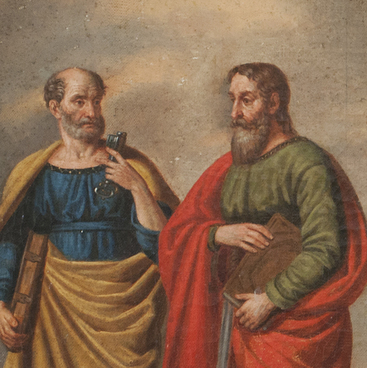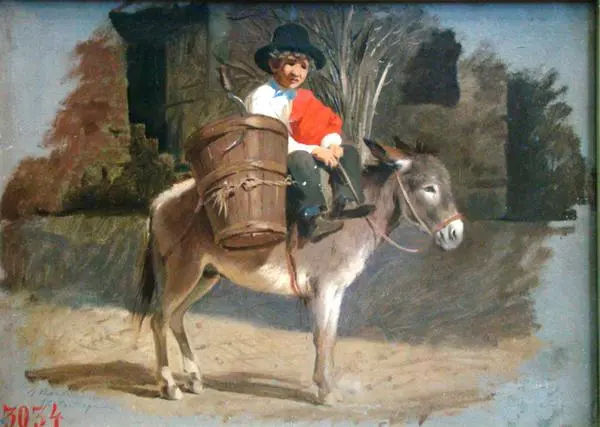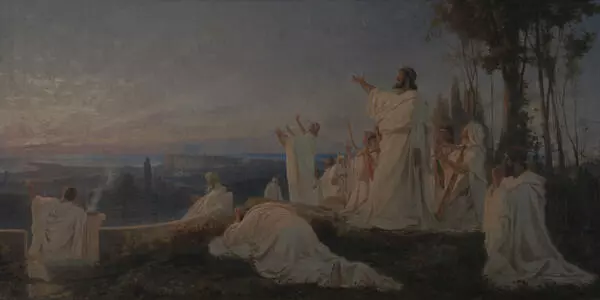In 1853, Feodor Andreyevich Bronnikov won the Great Gold Medal of the Imperial Academy of Arts for his scheduled painting Holy Mother Joy of All who Sorrow and was conferred the title of Class I artist, as well as a fellowship for study outside Russia. In 1854 he went abroad and through Germany, France and Switzerland arrived in Italy.
By the mid-19th century, Rome had a rather numerous colony of Russian artists, who focused on studying the monuments of Rome, its ancient, medieval and Renaissance periods, were interested in the contemporary life of Italy, its art and culture. Together with his friends he travels tours the country, makes lots of sketches and studies from nature. His works of that period were full of vivid perception of life around him. They portray poor huts and houses, scenes in the streets of towns and villages, fishermen, women washing clothes, playing children, beggars in city squares and at cathedrals and churches, boys minding goats and pigs.
In Amalfi, Bronnikov and his friends saw a scene, which provided him with a theme for his future picture A sick man at the walls of a Catholic monastery painted in 1874. His friend and Arts Academy classmate Aleksey Petrovich Bogolyubov wrote in his Memoirs of the Sailor-Artist: ‘…Bronnikov observed a good scene from life and painted it later… A man sick with malaria was brought to the gates of a monastery. Monastery monks sat on a veranda overlooking the sea drinking wine, the thick oily face of a Capuchin looked out the gate only to tell the sick man and those around him to bugger off’.
By choosing a narrative theme for his picture, Bronnikov wanted to give the situation a sense of the past and the future. All people in the picture are divided into groups, which each one unfolding its own theme, which is important for understanding the scene. In the centre of the composition there is a woman standing by a half-opened door of the Catholic monastery and asking the monk for help. The sick man lies by its threshold. Next to him are his children. The girl lost her strength and leans on the stone balusters of the porch, while the boy looks at the monk with a glimmer of hope. Through their expressive postures and gestures, the artist describes them in detail.
Of no less importance for understanding the picture and the rationale of the scene is the group of monks dining on the veranda. The author portrayed their silhouettes at the background, at a distance by so doing showing their indifference to the grievances and sufferings of ordinary people. A bent cross near the entrance to the monastery is the symbol of shattered faith in the kindness of the church.
The colours of the picture are based on a beautiful comparison of warm ochroleucous brown tones and cold greenish-blue ones. Through colour Bronnikov managed to portray the sensation of summer twilight, a contrast of the endless blue sea, urban buildings blurring in the misty air and illuminated by the rays of late afternoon sunlight with the twilight cold coming from the walls of the monastery.








